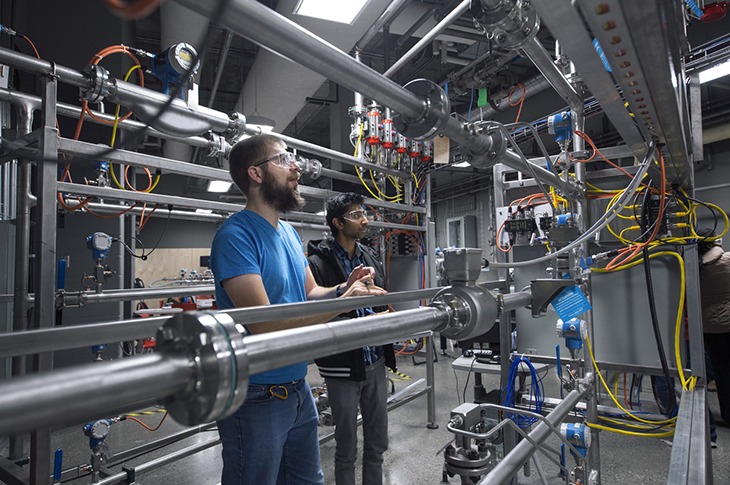The business pivot: staying nimble to stay profitable

Technical disruption causes a change in the way we work. Maybe not today or even tomorrow, but eventually. Or we risk getting left behind.
In the 2019 Energy Services and Supply Outlook Study, employees in Alberta’s energy industry indicated technology disruption was happening now or soon will.
What does technology disruption mean to your workforce? To your profits? Craig Hess is the Director of Global Corporate Development at the Southern Alberta Institute of Technology (SAIT). He says training is the key to embracing the power of new technology.
“Innovation, disruption and change are going to happen,” says Hess. “The job of leaders is to help their workers be ready to adapt, and that means having the skills needed for changing work.”
Technical training and workplace skills
Hess encourages leaders to consider what skills their workers need to strengthen to perform their jobs.
For example, industry relies on SAIT to train Operations and Maintenance employees — a training capability SAIT has offered for decades and continues to adjust to the changing technological environment. Ultimately, these skills help companies address production optimization, a critical business advantage during tougher economic times.
The Energy Services and Supply Outlook study results indicate not only does the industry know technology change is coming, but it’s needed. More than 50% of respondents feel investing in new technology is important. And 36% believe new technology will help contain costs this year.
Between concept and successful implementation, the biggest step is the people factor — readying your workforce. “Getting people to adjust is the much bigger portion of the pivot than perhaps the technical side of this,” says Hess.
“We encourage our clients to explore development in the so-called soft skills: communication, leadership, negotiation. These are the attributes that will help employees be stronger as a team when change disrupts how we work.”
Since the downturn in Alberta’s economy, training was one of the elements trimmed from budgets across the province. Now, training is picking up as companies realize they can’t stay in a holding pattern and still expect growth.
“The upswing is coming, although perhaps more slowly than was anticipated,” says Hess. “Training employees can be one of the most powerful ways to address change and keep employees engaged. If you’re not already factoring training into your engagement strategy, you probably should.”
Trusted grads, trusted training
Calgary has come to rely on SAIT to produce grads who are ready to get to work. For more than 100 years, SAIT has been training a significant portion of the workforce in Alberta.
“SAIT can also help you continue to develop that same workforce,” says Hess. “Add new skills, add more of the leadership qualities essential to ongoing success. Don’t think graduation is the end of your engagement with what SAIT can offer you.”
The partner you want. The solutions you need.
We help businesses thrive in a changing world of work. Explore group training options through SAIT Corporate Training and discover talent development solutions for your organization — no matter where in the world — through International Corporate Training and Client Development.
Or, build your individual skill set with courses from SAIT's Centre for Continuing Education and Professional Studies.
Learn moreSkills for the Future
We prepare students for successful careers and lives.
SAIT'S
2020-2025
Strategic plan

Oki, Âba wathtech, Danit'ada, Tawnshi, Hello.
SAIT is located on the traditional territories of the Niitsitapi (Blackfoot) and the people of Treaty 7 which includes the Siksika, the Piikani, the Kainai, the Tsuut’ina and the Îyârhe Nakoda of Bearspaw, Chiniki and Goodstoney.
We are situated in an area the Blackfoot tribes traditionally called Moh’kinsstis, where the Bow River meets the Elbow River. We now call it the city of Calgary, which is also home to the Métis Nation of Alberta.